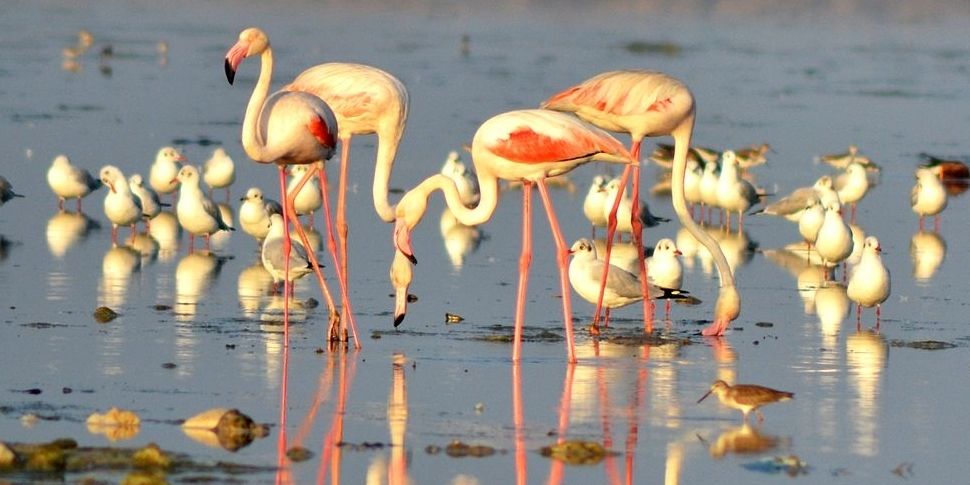Kaziranga’s Winged Wonders: 43 Grassland Bird Species Discovered in First-of-its-Kind Census
In the Green Space of Assam’s Kaziranga National Park, best known for its one-horned rhinoceros and majestic tigers, a quieter, gentler miracle is unfolding among the grasses. For the first time ever, a dedicated census of grassland birds has been carried out here, and its results are both beautiful and surprising. The census, conducted across 185 grassland locations between March and May 2025, revealed a vibrant community of 43 grassland bird species, many of which are globally threatened or endemic to the Brahmaputra floodplains. This rich diversity marks Kaziranga’s position not just as a sanctuary for megafauna but also as a biodiversity jewel for avian life (bird tourism), especially grassland birds, which are rapidly disappearing in other parts of India due to habitat loss.A Safe Place in the Disappearing GrasslandsGrassland birds are among the most threatened bird groups in India. These species, some incredibly rare and secretive, require a delicate balance of grass height, water availability, and open spaces to live. Unfortunately, this habitat is fast vanishing due to urban expansion, agriculture, and industrial encroachment. Kaziranga is different. Located in the dynamic area of the Brahmaputra River, the park offers a mosaic of tall wet grasslands, short meadows, and scrublands, creating a perfect sanctuary for grassland birds. Among the many discoveries, one bird captured the hearts of birdwatchers and conservationists alike: the Finn’s Weaver, a beautifully plumaged and endangered species known for its intricate nests woven high in the trees. Locally called Tukura Sorai, the Finn’s Weaver is an indicator species, meaning its presence signifies the ecological integrity of the region. Spotting a breeding colony of these elusive birds in Kaziranga is not just rare; it’s a symbol of hope.The Focal Ten: Endangered and Endemic Species of KazirangaThe survey paid special attention to ten focal species, most of which are either globally threatened or found only in the Brahmaputra floodplains. These include Bengal Florican, Swamp Francolin, Finn’s Weaver, Swamp Grass Babbler, Jerdon’s Babbler, Slender-billed Babbler, Black-breasted Parrotbill, Marsh Babbler, Bristled Grassbird, and Indian Grassbird. Each of these birds has a story to tell—stories of survival, adaptation, and the pressing need for habitat protection. Several of them are found nowhere else in the world.A Park of Giants and the Tiny Lives That MatterKaziranga is world-renowned as the largest home of the great Indian one-horned rhinoceros and also shelters Royal Bengal tigers, Asian elephants, swamp deer, water buffalo, and other large mammals. Yet the discovery of its bird richness adds a new dimension to the park’s ecological identity. Birds may be small, but their role in the ecosystem is enormous; they pollinate plants, control pests, and serve as early-warning systems for environmental health.Behind this scientific achievement lies the silent dedication of forest guards, researchers, and local communities. These are people who rise before the sun, walk silently through dew-drenched grasses, and note every chirp, flutter, and whistle. Their efforts are not just data driven; they are driven by love for the land. For many local villagers, especially those living around Kaziranga, these birds are part of their folklore, part of daily life. They know when the weavers arrive. They recognize the call of the florican. And now, their knowledge is being woven into modern conservation science.Conservation Beyond Borders: A Call to ActionThe grasslands are also known for their bird diversity. But the threats facing grassland habitats—fragmentation, agriculture, and climate change—are growing. Kaziranga’s success offers a model for conservation to protect natural floodplain systems, maintain traditional landscapes, and involve local communities in safeguarding biodiversity. Kaziranga is often seen as a place of giants—rhinos, elephants, and tigers. But now, we are learning to see its feathered residents as equally majestic. From the whispering wings of a Marsh Babbler to the woven artistry of the Finn’s Weaver, the park is a living poem of nature. It reminds us that sometimes, the smallest lives carry the biggest messages. And those messages are clear: protect, preserve, and listen to the wild before it’s too late.

